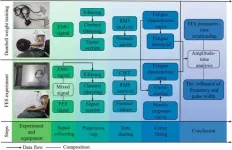(Press-News.org) In many cases of malignant melanoma, the effect of targeted treatment is lost over time. A research team from UZH and USZ has now discovered that a factor secreted by tumor cells is responsible for the resistance. These findings could pave the way for more effective therapies.
Malignant melanoma is one of the most aggressive types of cancer. Despite recent progress in effective therapies, the tumors of many patients are either resistant from the outset or become so during the course of treatment.
“It is therefore crucial to understand the mechanism behind resistance development in melanoma,” says Lukas Sommer, professor of stem cell biology at the Institute of Anatomy at the University of Zurich (UZH). A study under his lead has now identified a mechanism that impedes the effectiveness of therapies. The result provides new ideas for treatments to suppress the development of resistance. The project was carried out in collaboration with Mitch Levesque and Reinhard Dummer from the University Hospital Zurich (USZ).
Comparing resistant and non-resistant tumor cells
For the study, the team utilized an innovative fine-needle biopsy to sample tumor cells before and during therapy. This allowed the researchers to analyze each cell individually. The patients providing the samples were undergoing targeted cancer therapy for malignant melanoma, which inhibits signalling pathways for tumor formation.
“It was important that some of the tumors responded to the therapy, while others showed resistance,” says Sommer. This allowed the team to compare the metabolism and environment of resistant and non-resistant tumor cells and look for significant differences.
Interaction between tumor factor and immune cells
One of the most relevant findings concerned the POSTN gene: it codes for a secreted factor that plays an important role in resistant tumors. In fact, the tumors of patients with rapidly progressing disease despite treatment showed increased POSTN levels. In addition, the microenvironment of these tumors contained a larger number of a certain type of macrophage – a subtype of immune cell that promotes the development of cancer.
Through a series of further experiments – both with human cancer cells and with mice – the research team was able to show how the interaction of increased POSTN levels and this type of macrophage triggers resistance: the POSTN factor binds to receptors on the surface of the macrophages and polarizes them to protect melanoma cells from cell death. “This is why the targeted therapy no longer works,” says Sommer.
No resistance without cancer-promoting macrophages
The team considers this mechanism a promising starting point. “The study highlights the potential of targeting specific types of macrophages within the tumor microenvironment to overcome resistance,” says Sommer. “In combination with already known therapies, this could significantly improve the success of treatment for patients with malignant melanoma.”
END
The mechanism behind melanoma resistance to treatment
2024-06-27
ELSE PRESS RELEASES FROM THIS DATE:
Research shows how common plastics could passively cool and heat buildings with the seasons
2024-06-27
Researchers at Princeton and UCLA have developed a passive mechanism to cool buildings in the summer and warm them in the winter.
In an article published June 27 in the journal Cell Reports Physical Science, they report that by restricting radiant heat flows between buildings and their environment to specific wavelengths, coatings engineered from common materials can achieve energy savings and thermal comfort that goes beyond what traditional building envelopes can achieve.
“With the increase ...
Study supports precision radiation therapy in lung cancer
2024-06-27
HOUSTON ― Results from a new study led by researchers at The University of Texas MD Anderson Cancer Center support standard use of the more precise intensity-modulated radiotherapy (IMRT) over the alternative 3D-conformal radiotherapy (3D-CRT) for patients with unresectable, locally advanced non-small cell lung cancer (NSCLC). The study, published today in JAMA Oncology, revealed fewer side effects with IMRT, with similar survival outcomes.
A prospective secondary analysis of long-term outcomes from 483 patients on the Phase III NRG Oncology-RTOG 0617 randomized trial demonstrated ...
These mushrooms have “massively expanded” genomes to make them more adaptable to multiple lifestyles
2024-06-27
A study of multiple Mycena mushroom species reported in the journal Cell Genomics has found that they have unexpectedly large genomes. While the mushrooms had been thought to be purely saprotrophic – living by degrading dead organic material alone – the discovery suggests that they may instead have a collection of genes to enable them to adapt to different lifestyles as circumstances change. Interestingly, they show certain Mycena strains living in the Arctic have some of the largest mushroom genomes ever described.
These mushrooms show widespread growth across their genome. This includes not only the genes that help them invade or interact ...
AAAS and BII inaugurate new prize recognizing translational achievements in women’s health
2024-06-27
In collaboration with the BioInnovation Institute (BII), AAAS is announcing the establishment of the BII & Science Translational Medicine Prize for Innovations in Women’s Health. Submissions are now open for the first year of the prize, which will be awarded in 2025.
The new award will aim to recognize and elevate scientists who have made outstanding research discoveries that have translational potential to impact women’s health around the world.
Relevant research topics include, but are not limited to, investigation into maternal health and gynecological conditions, areas of ...
$10.5M biomaterials center to connect researchers, fund innovation and fight resource discrimination
2024-06-27
Images
Simultaneously advancing biomaterials research with clinical applications and connecting researchers at well-resourced institutions with those rich in diverse talent is the aim of a $10.5 million center supported by the National Institutes of Health.
The Humanity Unlocking Biomaterials center, led by the University of Michigan and University of Washington, is designed to spur the development of biomaterials solutions that have potential in medical treatments by bringing together researchers and providing seed funding to kickstart ...
Last segment of the world’s largest telescope mirror successfully cast
2024-06-27
The European Southern Observatory’s Extremely Large Telescope (ESO’s ELT), under construction in the Chilean Atacama Desert, is one step closer to completion. German company SCHOTT has successfully cast the blank for the last of the 949 segments commissioned for the telescope’s primary mirror (M1). With a diameter of more than 39 metres, M1 will be by far the largest mirror ever made for a telescope.
Too large to be made from a single piece of glass, M1 will consist of 798 hexagonal segments, each about five centimetres thick and 1.5 ...
Climate change and sea level rise pose an acute challenge for cities with combined sewer systems
2024-06-27
Older coastal cities, like Philadelphia, New York and Boston are at risk of being inundated by untreated sewage during floods. Due in part to the design of their combined sewer systems and in part due to sea level rise, these cities could be facing a growing public health crisis as climate change also drives more extreme precipitation, according to researchers at Drexel University who study urban stormwater management. The group recently published research that modeled the potential extent of the problem in a section of the coastal city of Camden, New Jersey, and the effectiveness of one proposed intervention to help ...
Revolutionary study finds optimal FES settings for enhancing muscle recovery training
2024-06-27
At present, stroke has become one of the most serious neurological diseases, which is usually accompanied by movement disorders and cognitive impairment. In recent years, the number of stroke patients has increased annually . Most stroke patients are accompanied by movement disorders, which seriously affect the normal life of patients. A groundbreaking study conducted by Shihao Sun and colleagues, recently published in the Cyborg Bionic Systems journal, has introduced innovative findings in the realm of Functional Electrical Stimulation (FES), particularly its application in muscle recovery and fatigue management.
Functional ...
MD Anderson and Rice launch Cancer Bioengineering Collaborative
2024-06-27
HOUSTON ― The University of Texas MD Anderson Cancer Center and Rice University today announced the creation of the Cancer Bioengineering Collaborative to develop innovative technologies and bioengineering approaches to improve cancer research, diagnosis and treatment.
Led by Rice’s Gang Bao, Ph.D., and MD Anderson’s Jeffrey Molldrem, M.D., the initiative aims to foster collaboration between the two institutions on fundamental and translational cancer research, to develop new technologies for cancer detection and therapy, and to secure external funding in support of further research and training.
Envisioned as a hub for accelerating ...
Harnessing musculoskeletal modeling: A leap forward in personalized muscle strength assessment
2024-06-27
Researchers have developed an innovative method for assessing spinal muscle strength, utilizing isokinetic testing combined with advanced spine musculoskeletal modeling. This cutting-edge approach, detailed in a study published by the Cyborg and Bionic Systems journal, marks a significant advancement in personalized health and athletic training.
Understanding individual muscle strength is crucial for optimizing physical therapy and enhancing athletic performance. Traditional methods, however, often fall short in precision. The newly introduced technique by Zuming Xiao and colleagues from the Beijing Institute of Technology and Shenyang ...






